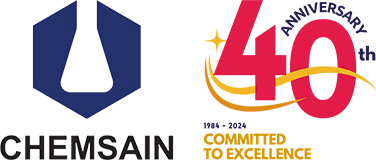ZLNG Project initiated by PETRONAS is a nearshore floating liquefied natural gas facility with minimum 2.0 MTPA of loadable LNG production capacity. ZLNG Project is expected to accelerate PETRONAS’s LNG leadership ambition in increasing market capitalisation through diversification of LNG production centres and ensure continued investment at upstream fields via stability of gas offtake. It is one of the key distinct projects under Sabah Gas Masterplan which aims to sustainably pursue the full potential of domestic natural gas industry in Sabah.
ZLNG Project consists of the following main components:
- Nearshore Floating LNG (FLNG) Facility – a floating natural gas liquefaction facility with minimum LNG production capacity of 2.0 MTPA and feed gas volume of 320 MMSCFD which will be constructed on a hull anchored nearshore at a new jetty extended from the existing PCFSSB jetty within Brunei Bay in Sipitang.
- Jetty Extension – current jetty operated by Petronas Chemical Fertiliser Sabah Sdn Bhd (PCFSSB) will be extended approximately 713 m (distance from the existing PCFSSB jetty head to the last mooring dolphin for the extended jetty) to cater shipping out of the LNG product. The FLNG will be moored to the extended jetty and the LNG carrier will berth alongside with the FLNG.
- Onshore Facilities – a non-process building located on a relatively flat vacant land measuring approximately 4 acres (1.6 ha) adjacent to the existing PCFSSB facility consisting of warehouse, workshop, scheduled waste and hazardous material storage, administration office.
- Gas Pipeline – an approximately 12-km of nearshore and onshore 24-inch gas pipeline including gas metering station and scraper launcher station which starts from the tee off point from the existing Sabah Sarawak Gas Pipeline (SSGP) main line connecting to the FLNG Facility.
- FLNG Power Supply – two potential sources of 64MW power supply to the FLNG Facility are considered, i.e GTG and SESB supply.
The establishment of ZLNG’s floating LNG facility and installation of Gas Turbine Generators (GTGs) are prescribed activities under the Environmental Quality (Prescribed Activities) (Environmental Impact Assessment) Order 2015. Therefore, a report on the impacts of the proposed Project on the environment is prepared for approval of the Department of Environment (DOE) Sabah. The objective of the EIA is to ensure that all impacts, direct and indirect, especially environment and social associated with the proposed Project is fully examined and addressed.
Site preparation works for ZLNG Project involves extension to the current PCFSSB jetty as well nearshore excavation for the gas pipeline approach to FLNG Facility in additional to the onshore gas pipeline connecting to SSGP. These are classified as prescribed activities under the First and Second Schedules of the State of Sabah’s Environment Protection (Prescribed Activities) (Environmental Impact Assessment) Order, 2005. Hence, a separate EIA report was also prepared and submitted to Environment Protection Department (EPD) Sabah in June 2022. This was subsequently approved in August 2022.
Description of Actual Services Provided:
A multi-disciplined team of sector-specific specialists gathered data and conducted field studies on all aspects of the physical, biological and social environment, documenting the current situation and highlighting the core environmental issues. Issues that were identified and assessed are as listed below based on each project stages:
Construction Stage:
- Water Quality Deterioration
- Air Pollution
- Noise Pollution
- Ecology
- Traffic (Marine and Land) Management
Operation Stage:
- Air Quality
- Risk/ Hazard Assessment
- Noise Pollution
- Water Quality Deterioration
- Marine Traffic (Navigation)
- Aesthetics/ Visual
Other Potential Impacts:
- Residual Impacts
- Occupational Safety and Health
- Soil, Groundwater and Odour Contamination
- Socio-Economic Impact
- Potential Abandonment
The collation of these information then formed the basis for the formulation of the mitigation measures and actions proposed in the Environmental Impact Assessment.
Key Project Elements:
The key project elements included the following:
- A profile of the existing environmental condition within 5-km radius of the FLNG Facility which focuses on the identification and mapping of the existing physical, biological and land use conditions in the immediate areas including any Environmentally Sensitive Areas (ESA) such as forest reserve, archaeological/ cultural places of significance, etc. This includes a review of the institutional and legal set-up and identification of the main issues, opportunities and constraints.
- Dispersion Modelling conducted with the USEPA’s AERMOD model (Version 19191, April 2020) and one year of hourly meteorological data generated by the Weather Research and Forecasting (WRF) Model. This is conducted to predict PM10, PM2.5, SO2, NO2, CO, Benzene, Toluene, Carbonyl Sulfide (COS) and Hydrocarbon concentrations in ambient air resulting from ZLNG Project possible four main scenarios: Normal operation; Startup operation; Emergency and Acid Gas Thermal Oxidiser (AGTO) maintenance.
- Water quality modelling and assessment (sediment plume, effluent discharge dispersion) using MIKE21 and MIKE 3 modelling system to predict the likely plume dispersion and sedimentation from the jetty piling and nearshore pipeline trenching works as well as spreading of treated effluent under the influence of the fluid transport and associated dispersion processes in the waterbody.
- Quantitative Risk Assessment (QRA) using EFFECTS software to identify possible major hazard from the project operation (utilisation of natural gas, condensate and Liquefied Petroleum Gas) which can potentially cause jet fire, flash fire, pool fire and even explosion. Subsequently, the significance of risk levels is determined and compared to the DOE’s risk acceptance criteria.
- Outlining the key findings and recommendations from the Marine Traffic Risk Assessment to minimise safety risk to the public from gas pipeline and jetty construction works as well as operation of the FLNG Facility.
- Environmental noise study using Cadna-A software to propagate noise levels generated from various ZLNG Project noise sources so as to assess noise impact to the nearest public receptors/ surrounding land use.
- Outlining the waste management strategy during construction and operation stages for the various wastes produced such as biomass, scheduled wastes, solid waste and sewage.
